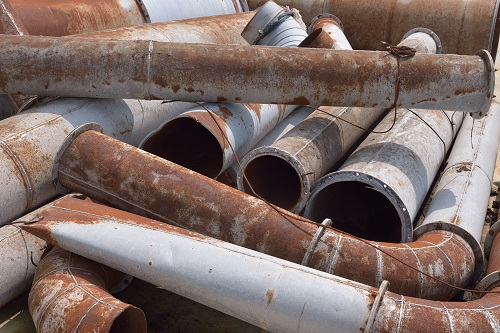U.S. military completes Pearl Harbor underground fuel tank draining following 2021 leak
HONOLULU (AP) — The U.S. military said it’s finished draining millions of gallons of fuel from an underground fuel tank complex in Hawaii that poisoned 6,000 people when it leaked jet fuel into Pearl Harbor’s drinking water in 2021.

Joint Task Force Red Hill began defueling the underground tanks in October after completing months of repairs to an aging network of pipes to prevent the World War II-era facility from springing more leaks while it drained 104 million (393.6 million liters) of fuel from the tanks.
The task force was scheduled to hand over responsibility for the tanks on Thursday to Navy Closure Task Force-Red Hill. This new command, led by Rear Adm. Stephen D. Barnett, is charged with permanently decommissioning the tanks, cleaning up the environment and restoring the aquifer underneath.
Vice Adm. John Wade, the commander of the task force that drained the tanks, said in a recorded video released Wednesday that Barnett understands “the enormity and importance” of the job.
Wade said the new task force’s mission was to “safely and expeditiously close the facility to ensure clean water and to conduct the necessary long-term environmental remediation.”
The military agreed to drain the tanks after the 2021 spill sparked an outcry in Hawaii and concerns about the threat the tanks posed to Honolulu’s water supply. The underground tanks sit above an aquifer supplying water to 400,000 people in urban Honolulu, including Waikiki and downtown.
A Navy investigation said a series of errors caused thousands of gallons of fuel to seep into the Navy’s water system serving 93,000 people on and around the Pearl Harbor naval base in 2021. Water users reported nausea, vomiting and skin rashes.
The Navy reprimanded three now-retired military officers for their roles in the spill but didn’t fire or suspend anybody.
Shortly after learning of the spill, the Honolulu Board of Water Supply stopped pumping water from the aquifer that lies under the fuel tanks to prevent leaked fuel from getting into the municipal water system. The utility is searching for alternative water sources but the Pearl Harbor aquifer was its most productive as it provided about 20% of the water consumed in the city.
Related News
- Cadiz to supply water to over 4,000 California homes through revamped Northern Pipeline
- Virginia American Water to invest over $10 million in water infrastructure upgrades with $15 million Cape Charles acquisition
- Michigan to expand clean water plan by $290 million to support statewide water infrastructure upgrades
From Archive

- DeLa Express seeks FERC approval for Permian-to-Louisiana gas pipeline project
- OSHA penalizes Houston contractor over safety violations resulting in worker's death
- Fiber infrastructure has no known expiration date, Fiber Broadband Association research concludes
- Nevada OSHA fines Elon Musk's Boring Company over safety violations in Vegas tunnel project
- Damage prevention and safety: Turning awareness into action
- Ditch Witch 1030
- Michigan lawmakers introduce bills to create septic codes throughout the state
- Indiana American Water to gain 8,000 water customers with Silver Creek Water acquisition
- Arkansas governor allocates $42 million for water infrastructure projects
- Federal judge finds Flint, Mich, in contempt over lead water pipe crisis



Comments